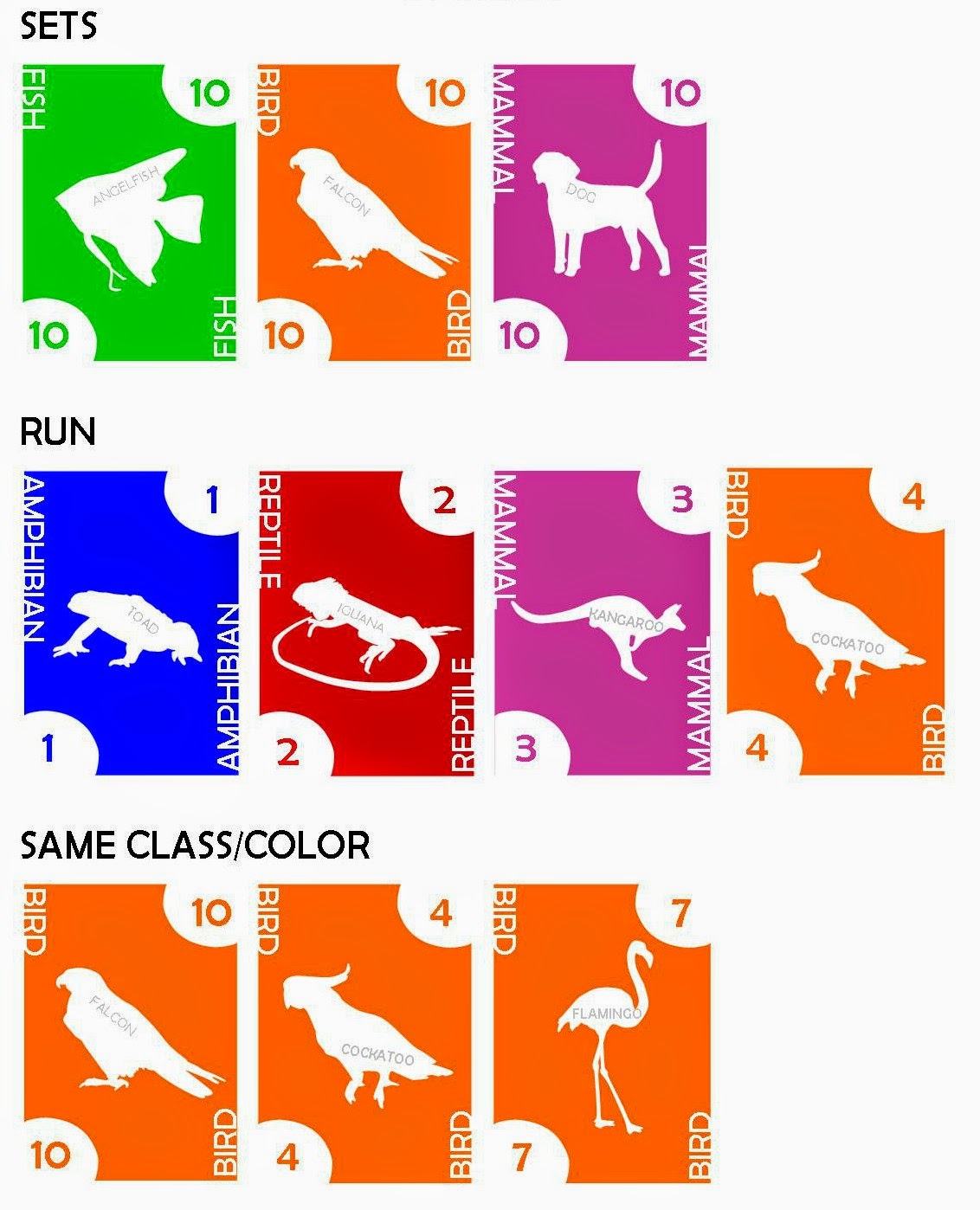Have you ever played Phase 10? It's a rummy-type card
game and it's the inspiration for this vertebrates card game that features examples
from the five classes of vertebrates:
amphibians
birds
fish
mammals
reptiles
Prep
Download the free 9-page PDF from Google Drive here.
Print pages 1-8 on heavyweight white cardstock.
Print page 9 (a reference sheet) on plain office paper.
Use a paper trimmer to cut all the cards apart.
Shuffle
The Objective of
the Game
Be the first player to complete all rounds of play. If
all/both players complete the rounds at the same time, the player with the
lowest score wins.
How to Play
Deal 10 cards to each player, who keeps their cards from
opponents' view. The rest of the deck is placed in the middle of the play area
and the top card is flipped over to start a discard pile.
The youngest player starts play by drawing a card either
from the draw pile or the discard pile. Their turn ends when they discard one
card.
Play starts with players trying to get all the cards
necessary for Round 1. The rounds follow:
Round 1: 2 sets of 3
Round 2: 1 set of 3, 1 run of 4
Round 3: 7 cards of one class/color
Round 4: 1 set of 4, 1 run of 4
Round 5: 1 run of 7
Each player only makes one round per hand.
Sets are cards of all the same number. Runs are cards
with consecutive numbers. And cards of one class/color are all the same type of
vertebrate (e.g. all cards are reptiles).
WILD cards can be used to complete a round, in place of a
missing card. For example, if a player is creating a run and has a 1, 2, and 4
card. They can use the wild card in place of a 3 card.
SKIP cards, when discarded, cause another player to lose
their turn. Skip cards are never laid down as part of the round's cards.
Once a player has all the cards specified in that round,
they lay them down on the table in front of them for everyone to see. Any additional cards a player may have that
go along with these cards can be added (e.g. if a player has four 3 cards, but
only needs three, he/she can lay down the extra card).
The player can continue to add cards to their own
displayed hand and once other players lay down their own
sets/runs/all-one-color hands, opponents can play on them as well.
The goal is to get rid of all your cards, while drawing
and discarding each turn.
If a player plays all their cards, opponents must tally
their score based on the remaining cards in their hand.
Cards numbered 1-5 = 5 points
Cards numbered 6-10 = 10 points
Skip cards = 15 points
Wild cards = 25 points
If a player has yet to lay down all the specified cards
in the round when another players goes out of cards, not only will their score
be high, but the next time you shuffle and begin play again, they will need to
repeat their attempt to get that round's cards again.
This means that players may be striving to make different
rounds' hands.
Shuffle cards and deal 10 before each round.
Want a perfect book to go with this game? We read Animal School by Michelle Lord. It
contains a description (in rhyming verse) of each of the five classes of
vertebrates. It also has a great matrix toward the back of the book that identifies
their characteristics (some exceptions) and species from each class. This book
was the perfect complement to our activity!





This is just awesome! Thank you for sharing your talents with us.
ReplyDeleteI like all your stuff. It is all so useful and well made.
ReplyDeleteThank you for all your hard work.
God Bless